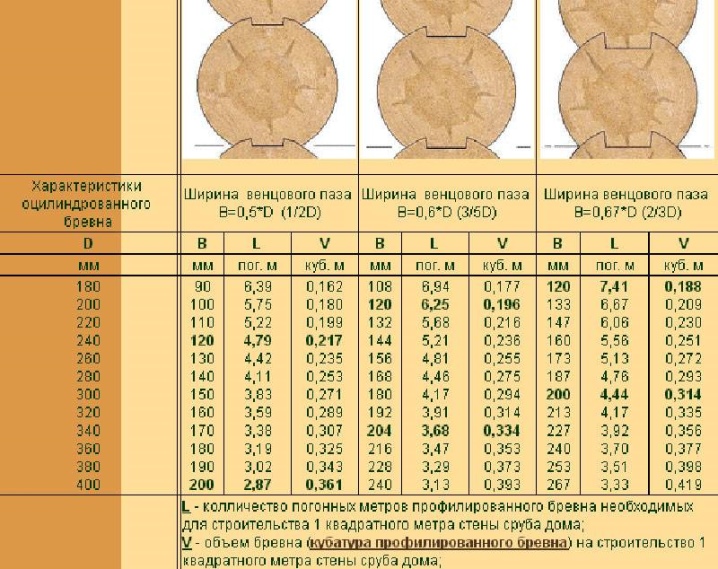Round log cubature

Cubature of rounded logs - wood of rounded logs, laid extremely tightly, with minimal gaps. The size of the gaps is determined by the current standards for timber harvesting.


Why know a cubature?
A rounded log is an ordinary round timber, from one side of which a layer of wood has been removed along the length. In comparison with a simple rounded one, it is a product with a longitudinal cut, the shape of which follows the arc of a circle. Thanks to this, logs with a cutout are reliably, stably fixed on top of each other, fitting into a perfectly vertical wall.
The cubic capacity of a rounded log is a value that has a target volume, but is devoid of constant mass.
This is the main value used in settlements with an organization or company selling timber (logs) at a certain price. The cost of a cubic meter of a log, despite the similarity in material, differs, for example, with a cubic meter of an ordinary board. To get more wood (by cubic meters), it is thoroughly dried.

How to calculate from the table?
Before calculating from the table how much a "cube" of a log costs, specify the species, grade and degree of wood drying. A raw log weighs heavier than a dry one - the percentage of water weighing it down can be up to 50% by weight. This makes the pieces of wood denser and heavier. For ease of calculation, the most common denominations of logs (in terms of length, diameter and surface area / section) are up to several tens of values. Cubic capacity of OCB for 6-meter logs is given in the table.

|
Diameter, cm |
Groove, cm |
Volume, cubic meters |
Log surface area, sq. m |
Number of logs per cubic meter (exact value) |
|
14 |
7 |
0,09 |
2,84 |
11,1 |
|
16 |
8 |
0,12 |
3,05 |
8,29 |
|
18 |
9 |
0,17 |
3,44 |
6,55 |
|
20 |
10 |
0,19 |
3,83 |
5,31 |
|
22 |
11 |
0,23 |
4,22 |
4,39 |
|
24 |
12 |
0,27 |
4,61 |
3,69 |
|
26 |
13 |
0,32 |
5 |
3,14 |
|
28 |
14 |
0,37 |
5,4 |
2,71 |
|
30 |
15 |
0,42 |
5,79 |
2,36 |
|
32 |
16 |
0,48 |
6,19 |
2,07 |
|
34 |
17 |
0,54 |
6,59 |
1,84 |
|
36 |
18 |
0,61 |
6,99 |
1,64 |
Before ordering rounded logs, the owner of the future object under construction calculates how many and what kind of round timber will be needed for the future construction. It is advisable to order only as many copies as is enough to build walls with door and window openings.

Formula calculation
Formula calculation is used primarily for processed trunks. The bark is removed from them, then they are turned on a sawmill or industrial milling cutter to a perfectly round state. Further, from the processed (calibrated) log, a layer is cut in the form of a "crescent", which is responsible for the correct vertical stacking of the logs on top of each other.
The standard for the length of a rounded log is 6 meters long. Sections of 3, 4, 5 m will be noticeably lower, and the purchase of a log will become economically unprofitable.

Logs over 6 m in length are also not much more profitable in terms of the specific price / length ratio.
The rounded log has a strictly specified size. The length and radius of the log are taken into account here. The volume occupied by the log is equal to the product of the number 3.1415926535 ... (approximate - 3.1416), the square of the radius value and the length of the specimen. The formula does not fully take into account the volume of wood cut in the form of a crescent - it is advisable to calculate it separately and subtract it from the obtained value. For example, a log with a diameter of 220 mm (length 6 m) is counted in more than 4 pieces - for each cubic meter.

When purchasing a calibrated log without a cut layer, which has identical values from one specimen to another, a certain volume value will be multiplied by the number of such logs. The oval section of an untreated log (not rounded to an ideal state on the machine) prompts the estimator to add the larger and smaller diameters, and divide the resulting number by two. The average value will give an approximate estimate of the radius - here the irregularities of the trunk from which the bark was removed are not taken into account.
A large batch of logs does not provide for an accurate calculation of the volume occupied by each log. If the user is ready to overpay, he will purchase a calibrated (turned to perfect round timber) log.

The cost of the work includes the work of an industrial milling cutter or a sawmill, control from the side of the worker-operator and the cost of wear and tear of the cutting and turning equipment. As a result, the customer will receive perfectly processed logs - in the requested number of pieces - where measurement and calculation errors are practically excluded.
The data on the number of logs of the selected "caliber" in one cubic meter were calculated theoretically and confirmed by the results of field tests. The unevenness of the log cannot guarantee a high class of accuracy in calculating the cubic capacity of the forest.














The comment was sent successfully.